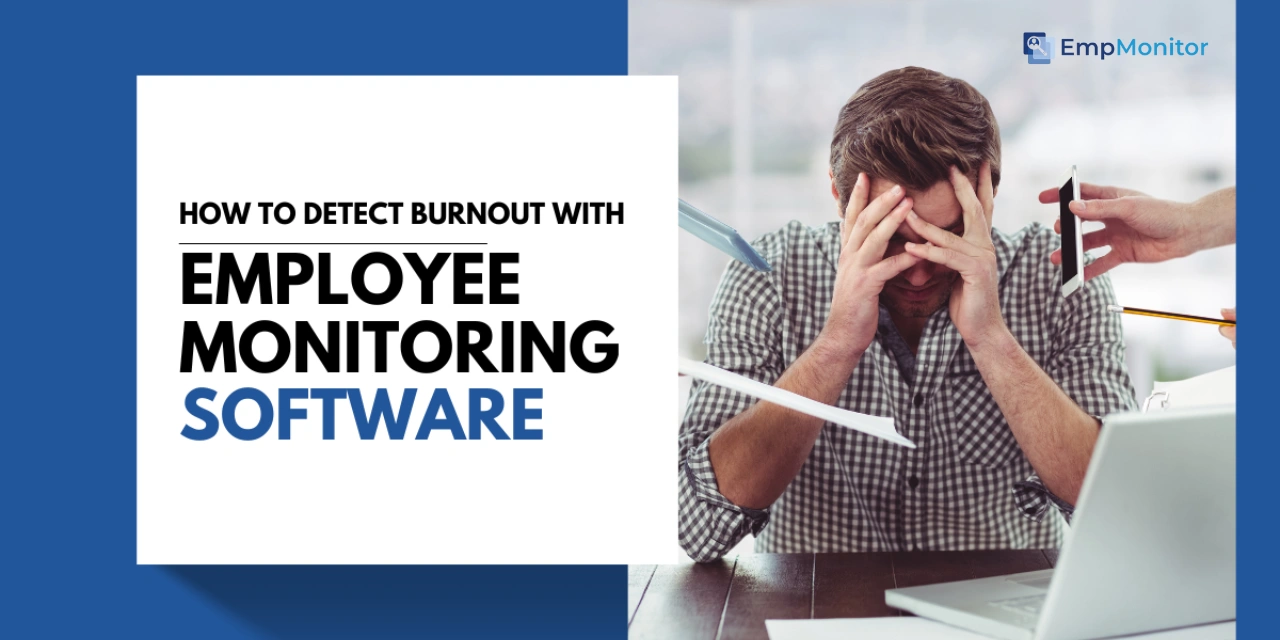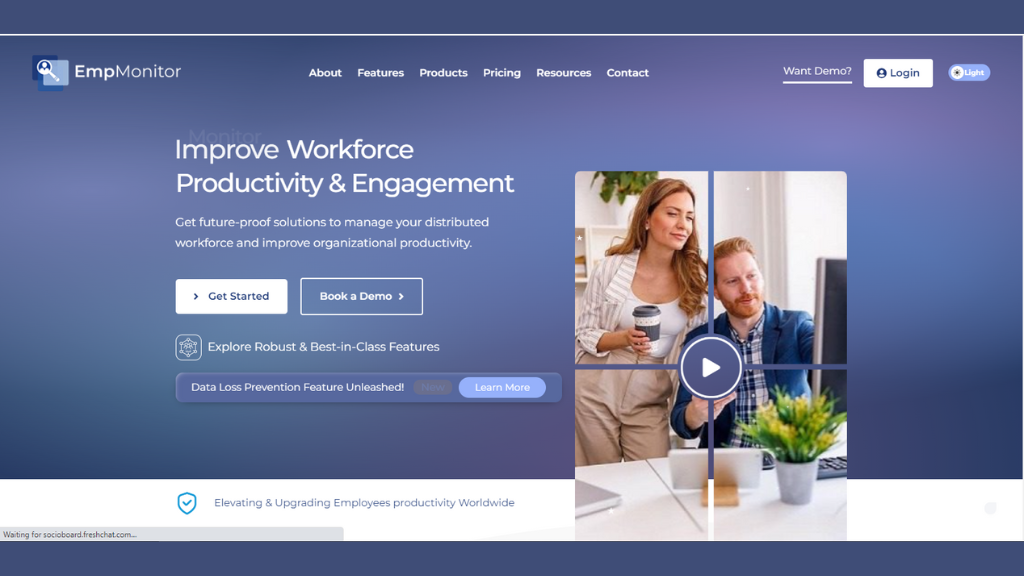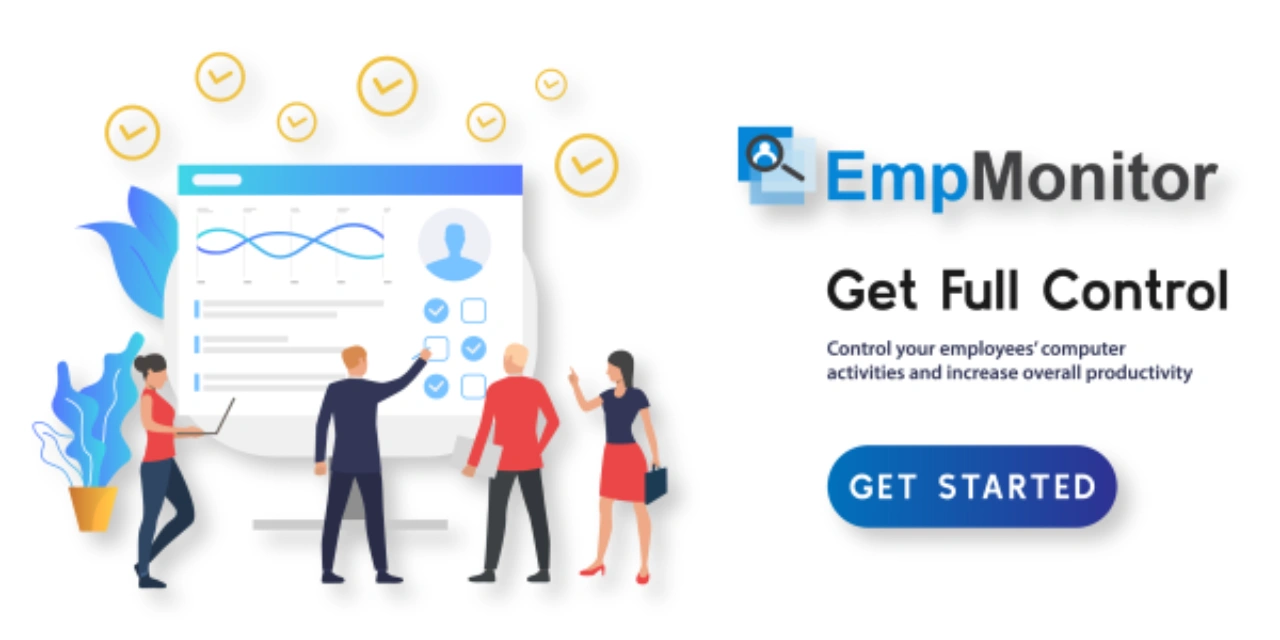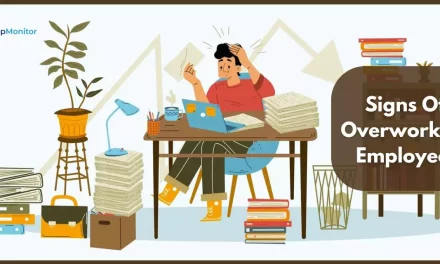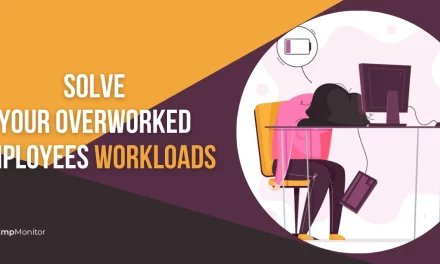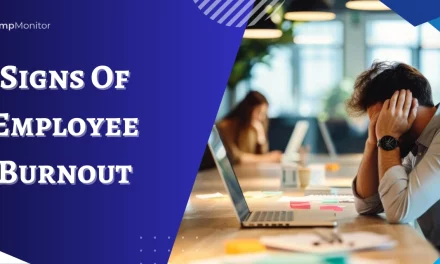How much more could your team achieve if employee burnout were caught early? Imagine fewer sick days, better focus, and higher energy at work. The truth is that Workplace burnout is a significant problem. It drains motivation and lowers productivity. Many companies lose billions every year because of it.
Employee monitoring software can help make this change. It’s not about spying on workers. It’s about understanding how they feel and work. This software tracks patterns like long hours, missed breaks, and drops in performance. These signs often point to Workplace burnout before it becomes serious.
By using employee monitoring software, managers can spot early warning signs. They can then take action to support their team. This means happier employees, less stress, and a stronger workplace.
If you want your business to grow, protecting your employees is key. Detecting burnout early is a smart first step. In this article, we’ll share five ways employee monitoring software helps you do just that. Let’s explore how you can keep your team healthy and productive.
In a hurry? Listen to the blog instead!
What is Workplace Burnout?
Workplace burnout is more than just feeling tired of work. It is a serious condition caused by long-term stress and pressure at the job. When stress builds up without relief, it can lead to feelings of exhaustion, negativity about work, and lower productivity. This is what we can also call employee burnout.
According to the World Health Organization, employee burnout is a syndrome from unmanaged workplace stress. It shows in three main ways: feeling very tired, losing interest or feeling cynical about the job, and feeling less effective at work.
Burnout doesn’t just affect the person suffering. It also impacts their coworkers, family, and even the whole company. Burned-out employees may take more sick days and struggle to focus. This can hurt team performance and overall success.
Employee monitoring software can help spot early signs of burnout. By tracking work patterns like long hours or drops in productivity, this software alerts managers before burnout gets worse. It’s a tool to support employee health and keep teams strong.
Understanding workplace burnout is the first step. With the right tools, you can help your team stay motivated, healthy, and productive.
What Are Symptoms, Effects & Causes of Workplace Burnout And Who’s At Risk?
Workplace burnout is a growing problem affecting workers across all industries. It happens when stress and pressure at work build up over time without relief. But who is more likely to face burnout, and what signs should you watch for? Let’s break it down.
What Are the Causes?
Burnout usually comes from constant workplace stress and high demands without enough breaks or support. When employees feel overwhelmed at work and disconnected from their job, workplace burnout starts to grow.
Lack of autonomy, unclear roles, and poor work-life balance add to the problem. Personal issues like trauma can also increase risk.
Symptoms of Workplace Burnout
Burnout shows up in many ways. People may feel exhausted—physically, mentally, and emotionally. They might lose motivation and feel negative or hopeless about their job. Other signs include irritability, poor sleep, and trouble concentrating.
Workplace Burnout can also cause anxiety, depression, and strained relationships with coworkers and loved ones. If left unchecked, it can lead to serious health problems like heart disease or substance abuse.
Effects of Workplace Burnout
Burnout doesn’t just affect one employee. It impacts teams, families, and the whole company. When an employee burns out, their low energy and negativity can spread, hurting morale and productivity.
For businesses, workplace burnout means higher turnover, more sick days, and rising healthcare costs. It damages a company’s reputation and culture. Research shows burnout costs the US economy over $500 billion every year.
Who’s at Risk?
Anyone can experience burnout, but certain groups are more vulnerable due to the nature of their roles or environments. Leaders such as CEOs and managers often carry heavy responsibilities and face constant pressure to make critical decisions, which can significantly increase their risk of workplace burnout. Similarly, employees working in high-stress professions, like healthcare, law enforcement, and the legal field, regularly encounter intense demands and emotionally charged situations that contribute to chronic stress and exhaustion.
Additionally, workers in countries with fewer labor protections or cultures that emphasize long working hours, such as the US, Japan, and South Korea, tend to be more susceptible to burnout. Individuals who have little control over their daily tasks or those undergoing major career transitions also face elevated risks. Understanding these factors is essential to addressing workplace burnout proactively and creating a healthier, more supportive work environment for all employees.
Also Read:
Overwhelmed at Work? Try These Awesome Strategies for Relief
Employee Mental Health: Its Impact & How to Support It In 2025
Employee Burnout Causes, Symptoms, & How To Prevent It In 2025
How To Improve Employee Well-Being Using Employee Monitoring Software?
Keeping your team healthy and happy is the secret to success. Employee monitoring software isn’t about spying — it’s about support. When used right, it can boost well-being and prevent workplace burnout. Here’s how tracking employee hours and other data helps your workforce thrive:
Spot Overwork Early
Consistent tracking of employee work hours can uncover when someone is repeatedly working beyond their limits. If an individual is staying late too often or skipping days off, the system raises a red flag. With these early insights, managers can initiate conversations, redistribute workloads, or encourage time off before stress spirals into burnout or long-term disengagement.
Encourage Healthy Breaks
Workforce tools can detect patterns where employees aren’t taking regular breaks or are glued to their screens for extended hours. These subtle signs are often easy to overlook in remote or hybrid setups. With timely alerts, managers can gently nudge employees to take short, restorative pauses — improving focus, reducing eye strain, and promoting better employee mental health throughout the day.
Modern workforce management tools like EmpMonitor offer features that let employees apply for breaks directly within the system. At the same time, employers can monitor break patterns to ensure they’re taken regularly and responsibly. This balance helps maintain productivity while allowing employees to rest, promoting well-being without disrupting workflow.
Balance Work and Life
Fair and consistent scheduling, backed by real-time data, helps ensure that no team member is overburdened. By monitoring hours worked against assigned tasks, companies can make sure workloads stay manageable. This promotes a healthier work-life balance where employees can disconnect after hours, return to work refreshed, and maintain long-term job satisfaction.
Identify Team-Wide Issues
Sometimes, workplace burnout isn’t just isolated — it can be systemic. When analytics reveal multiple team members are overworked, missing deadlines, or displaying erratic performance trends, it signals deeper organizational issues. Recognizing these patterns early enables leadership to act proactively, introducing mental wellness initiatives, revisiting unrealistic KPIs, or piloting more flexible work models.
Boost Productivity Without Pressure
Monitoring isn’t just about keeping tabs — it’s a tool to optimize how work gets done. By analyzing task durations, concentration periods, and workload distribution, managers can assign tasks more thoughtfully. This prevents overloading high-performers or underutilizing others, creating a balanced environment where employees can deliver their best without feeling constantly pushed.
To support this kind of thoughtful task management, productivity monitoring tools play a crucial role. They provide real-time insights into who has completed their assigned work and who is still actively engaged in a task. This allows managers to assign new responsibilities more strategically, ensuring that only those who are truly available receive the next task.
No one gets overburdened, and ongoing work remains uninterrupted. Tools like EmpMonitor make this process even more seamless by offering detailed visibility into individual performance, task timelines, and overall team productivity, helping organizations maintain balance, reduce stress, and improve outcomes.
Build Trust with Transparency
When companies are transparent about why monitoring exists — to support rather than control — it changes the narrative. Sharing how insights are used to improve workloads, promote fairness, and address workplace burnout helps build mutual trust. Employees are more likely to feel valued and understood when they see that data is used to care for their well-being, not to micromanage them.
Improve Decision-Making
Gut instincts are helpful, but decisions grounded in real data are more effective. With visibility into employee time usage, project bottlenecks, and behavioral trends, leaders can make informed choices about hiring, resource allocation, and policy changes. This ensures support is directed where it’s truly needed — preventing workplace burnout and fostering a healthier, more sustainable work culture.
Using employee monitoring software the right way turns data into action. It’s not just about tracking employee hours—it’s about caring for your team’s health. Start using it to create a happier, stronger workplace today.
Conclusion
Employee burnout can hurt your team and your business. But with employee monitoring software, you can catch burnout early. It helps you see when your team is struggling and act fast. Tracking employee hours and work patterns isn’t about control, it’s about care.
When you support your employees, they stay motivated and healthy. That means better results for your company. Don’t wait for burnout to take over. Use employee monitoring software today to build a stronger, happier workplace. Your team and your business will thank you. Ready to start? Let’s make it happen!
Frequently Asked Questions
1. How can I tell if my team is burning out without asking directly?
Burnout often shows up in subtle ways before employees openly express it. Monitoring tools track work hours, productivity fluctuations, missed breaks, and increased multitasking — all early indicators of stress. These insights allow managers to recognize patterns of overwork or disengagement without relying solely on self-reporting, enabling timely support measures like workload adjustments or wellness initiatives before burnout impacts performance and morale significantly.
2. What if only a few team members are constantly overloaded while others aren’t?
Unequal distribution of work is a common source of frustration and burnout. Employee monitoring software helps reveal who is handling disproportionate tasks or working excessive hours, often without visibility to managers. By identifying these imbalances, leaders can redistribute assignments more evenly, preventing burnout among overworked employees while ensuring others remain productively engaged. This balanced approach promotes fairness, improves team morale, and sustains overall productivity.
3. Can this help reduce quiet quitting or disengagement?
Absolutely. Quiet quitting — where employees mentally check out without formally resigning — often stems from chronic stress and feeling undervalued. Monitoring solutions detect drops in engagement through reduced active work time or slower task completion. With this data, managers can proactively address underlying issues by adjusting workloads, offering flexible schedules, or fostering open communication. Early intervention helps re-engage employees, demonstrating that the organization cares about their well-being and professional growth.
4. How do I encourage employees to take breaks without sounding controlling?
Encouraging breaks is essential, but can feel intrusive if approached incorrectly. Monitoring software identifies when employees skip breaks or have irregular work patterns, providing objective data without singling anyone out. Managers can use this information to send gentle reminders or promote team-wide wellness campaigns emphasizing the benefits of rest for focus and creativity. This non-confrontational approach normalizes breaks as part of a healthy work culture, helping employees recharge without feeling micromanaged.
5. Will this add more pressure on employees if they know they’re being monitored?
Concerns about monitoring causing stress are valid, but can be addressed through transparency and purpose. When employees understand that monitoring tools are used to prevent burnout by ensuring fair workloads and supporting work-life balance, trust builds. Clear communication about data privacy, how insights will be used, and involving employees in setting reasonable expectations transform monitoring from a surveillance tool into a resource for personal and team well-being, reducing anxiety and fostering a positive environment.

